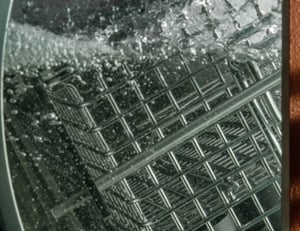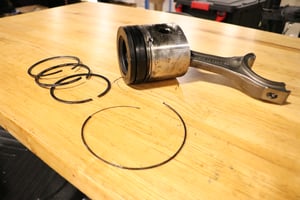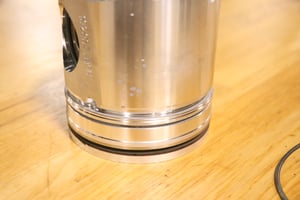
Why iFP Clean Excels in Remanufacturing Applications
The Remanufacturing Challenge
Remanufactured (reman) products often arrive with heavy organic contamination (oils, greases, carbon/varnish) and, at times, inorganic residues (salts, oxides, corrosion). In conventional aqueous cleaning systems, tanks are quickly overwhelmed due to the heavy soil load, forcing frequent bath changes and yielding inconsistent results. The iFP Clean hybrid washing approach mitigates this by enclosing the washing process and by removing bulk contaminants via a closed-loop solvent distillation/filtration system.
The Hybrid Approach
The iFP Clean KP.HYBRID series machines perform immersion cleaning under a vacuum with programmable load motion and optional ultrasonics. Vapor and vacuum drying occur in the same chamber. Operating in vacuum improves wetting and soil evacuation in ring grooves, oil galleries, and blind holes, while the vacuum drying process ensures parts exit the machine truly dry and immediately ready for downstream operations.
The Differentiator: Self-Regenerating Tanks
Where aqueous cleaners rapidly lose effectiveness, iFP maintains solvent quality inside the machine. Continuous distillation returns clean solvent back into the tanks, while filtration and oil separation remove fines and oils without operator intervention. This is a critical step for eliminating unplanned tank swaps, which becomes vital in reman work where incoming part condition varies widely.

- Access to tight features: Modified alcohol's low surface tension, combined with vacuum and motion, enables reliable soil release in grooves, galleries, and capillary features.
- Reliable dryness: Vacuum drying removes residual liquids from complex geometries; parts exit the machine completely dry and spot free.
- Stable results across multiple washes: Internal distillation and filtration maintains solvent quality, ensuring consistent outcomes even when reman product arrives in heavy soil states.

- Maintenance hours and downtime: Closed loop solvent regeneration drastically reduces maintenance and tank changeovers.
- Lower solvent consumption and waste: Oils, grease, chips, and other soils are separated within the machine, extending the life of your cleaning chemistry and significantly reducing waste removal frequency.
- Process consistency across shifts: A sealed, programmable machine operation limits operator-dependent variation; no manual transfers from tank to tank and the same process run across different operators.
Washing Process for a Remanufactured Piston
Heavily soiled remanufactured pistons with oils, grease, and heavy carbon buildup were washed using the iFP KP.HYBRID system, which combines modified alcohol and aqueous-based treatment in a closed-loop distillation process.

Heavily soiled remanufactured piston and rings before the KP.HYBRID wash.

The piston and rings are secured for wash with the KP.HYBRID basket system.

Fully clean and dry piston after one KP.HYBRID wash cycle using both solvent and aqueous cleaning methods.
The Washing Process Explained
The piston and associated parts underwent a single wash cycle in the KP.HYBRID system following this process:
Step 1: Solvent spray and immersion to remove initial oil and grease soil.
Step 2: Aqueous treatment (KP.HYBRID) to eliminate carbon buildup and inorganic contaminants.
Step 3: Water rinse to remove detergent residues.
Step 4: Full solvent submersion for final rinse and surface preparation.
Step 5: Solvent vapor treatment in preparation for drying.
Step 6: Vacuum drying to achieve fully dry, spot-free final components.
Conclusion
The iFP KP.HYBRID system replaces the need for frequent bath changes and related maintenance with in-machine solvent regeneration and a sealed-chamber process. The result is predictable cleanliness, fewer interruptions, and a stable, scalable washing process for remanufacturing applications.
